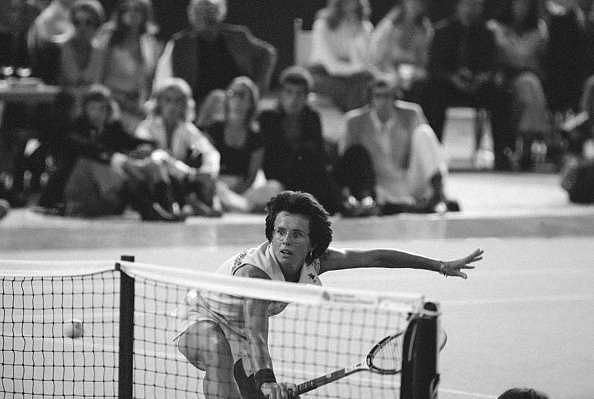
Four decades on: Relive the Battle of the Sexes between Billie Jean King and Bobby Riggs that gave birth to the WTA
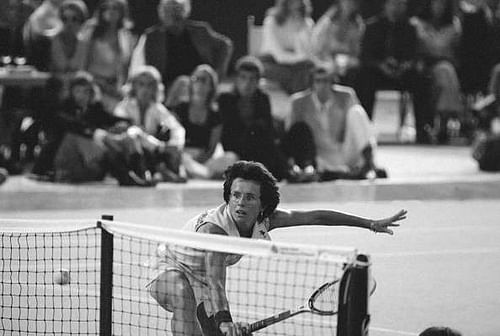
A number of tennis’ epic battles over the years have been titled ‘The Battle of the Sexes’, but there is one iconic match that is the first to come to mind when that name is mentioned, and that is the 1973 battle between men’s player and former World No. 1 Bobby Riggs and then Women’s World No. 1 Billie Jean King.
Riggs had repeatedly denigrated the women’s game, describing it as inferior to the men’s. Looking for an opportunity to profit, Riggs, a former gambler, challenged Billie Jean King to an on-court battle. After he defeated 24-time Grand Slam winner Margaret Court, King decided to accept his challenge - one that was played on Mother’s Day, 1973.
55-year-old Riggs had, at the time, also made several misogynistic remarks – including one that said the “.....best way to handle women is to keep them pregnant and barefoot.” He had boasted, at the time, that even at his age, he could beat the top players of the time, describing them as ‘too weak.’
In the lead-up to that match, Riggs had gone on to taunt King in the media, saying she “would lose because she’s a woman, and women are too weak. They don't have the emotional stability.”
The two played to a packed stadium in Texas’ Houston Astrodome as Riggs continued to taunt King, a proud women's rights activist. Prior to the match, King had said losing to Riggs would “set womankind back by 50 years,” while Riggs agreed to “jump off a bridge” if he lost.
The match was not short of pomp – Riggs wore a jacket emblazoned with the logo of confectionery company Sugar Daddy. The firm had paid Riggs an undisclosed sum of money, and the player would wear that jacket for the first three games of the match.
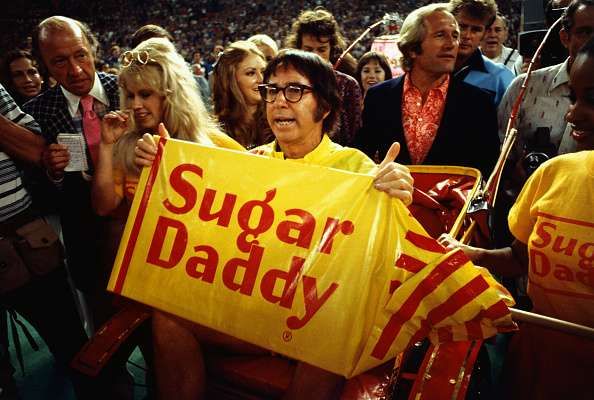
Riggs was sponsored by confectionery firm Sugar Daddy to wear their logo; he was flanked by models 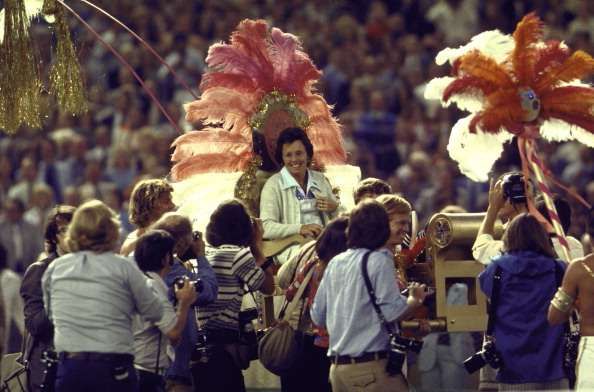
Cleopatra: King was the Queen of tennis for a significant time – perhaps a fitting entry, then! His rival, Billie Jean King, entered on a palanquin flanked by four men a la Cleoptra, in a match that was as remembered for its showiness as it was for its revolutionary nature.
King, who was a serve-and-volley specialist, decided to bamboozle Riggs with baseline play instead. Down a break in the first set, King pulled back to play an incredibly strong game , varying shots to not only defeat her egotistical opponent, but in straight sets – 6-4, 6-3, 6-3.
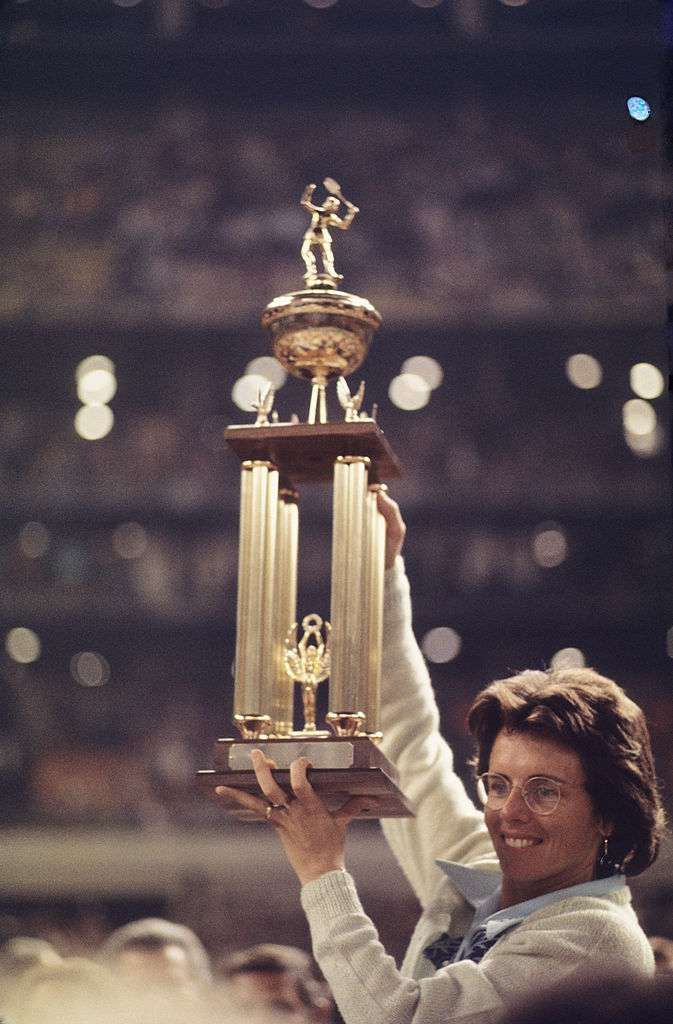
Riggs, known to be a gambler and a hustler, faced accusations of having thrown the match, which he denied. Much before the equal pay debate had been reignited, it was King who staunchly advocated the issue, one she continues to advocate today.
The pay disparity in the 1970s had become so dire that King once received US$600 for winning a Grand Slam title – with her male counterpart, Ilie Nastase, receiving $3,500 – a routine occurence.
That advocacy pushed King to, with eight other tennis players, become the Original 9 – nine women’s tennis players who decided to form their own tennis circuit. Seven American players – King, Rosemary Casals, Peaches Bartkowicz, Kristy Pigeon, Nancy Pigeon and Valerie Ziegenfuss , and two players from Australia – JudyTegart Dalton and Kerry Melville Reid – came together to form their own tennis league.
In its earliest days, the Virginia Slims league seriously struggled, and despite having called in to several quarters, received little to no support. The most crucially conspicuous by its absence was that of the USLTA, which refused to recognize or fund the league – also jeopardizing the careers of the majority of its players.
It was cigarette manufacturer Philip Morris who, with the assistance of $5000 of Julie Heldman’s own funds, helped the players sign token contracts that permitted them to set up a series of eight ‘sponsored’ tournaments.
Despite the players - and tournaments - being shunned by the US Lawn Tennis Association, the players were able to set up the league – that more than quadrupled in number by the end of that year.
It was this push by King and the eight other women's players that saw the first origins of a women’s tennis league formed.
The Virginia Slims league grew exponentially both in the number of members and tournaments it hosted, and in the span of just over two and a half years, one of its principal founders – Billie Jean King – officially inaugurated the WTA or the Women’s Tennis Association in 1973. From only 9 members back in the day, the association has grown to over 2,500 members – a number that is significantly increasing each day.
That number was precipitated into action by the win of one player on the 20th of September, 1973. Perhaps we underestimate how deeply one person’s answer to a call to action can impact the future of that sport – but that was what Billie Jean King did. A movement precipitated by perhaps a single player has now seen women's tennis grow into just as robust a sport as its men's equivalent, with greats who found, in King, an idol to look up to in joining that sport themselves.
All-importantly, it is those very same players who are now idols for younger generations, who can now play with the confidence that the sport lacks the restrictions that all but stopped women playing decades ago.
Without King’s win, we may not have seen the legendary likes of Serena and Venus Williams, and of Martina Hingis and Steffi Graf before them, come to the fore; India may not have been able to see a Sania Mirza, and there may not have been a significant generation of teenage girls the world over realizing their dreams of playing competitive tennis.
Women’s tennis, and its fans, owe more to the Battle of the Sexes – and to Billie Jean King – than we perhaps realise.